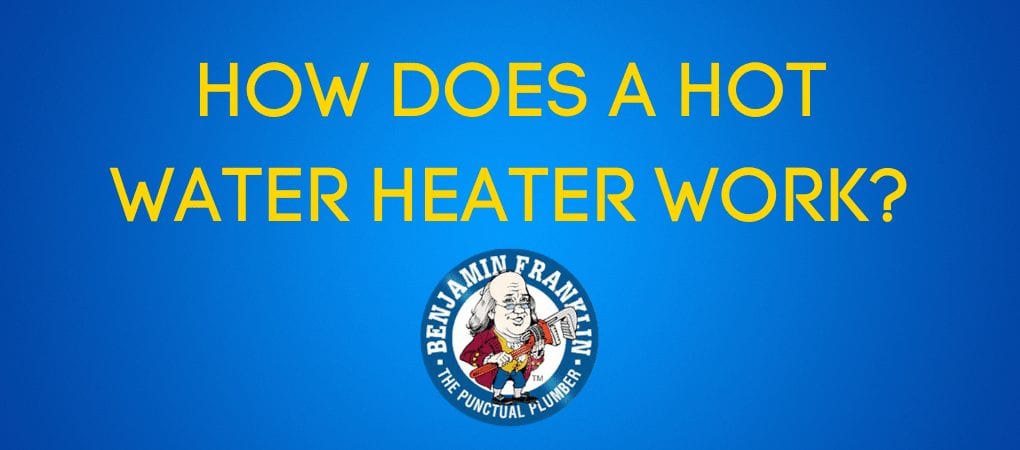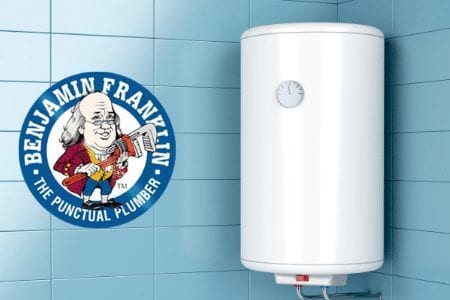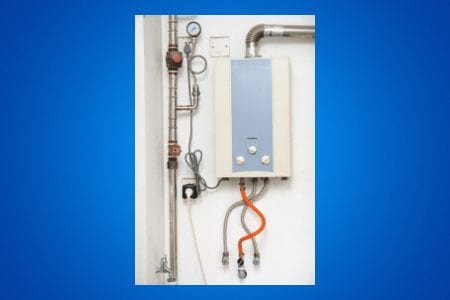
10 May How Does a Hot Water Heater Work?
How a Hot Water Heater Works
Most of us never give our hot water heater a second thought until it stops working. Out of sight, out of mind, as the saying goes, and if hot water flows when it’s needed, there’s never a reason to think about what might happen if it one day quits.
Overall, it’s a good idea to have a basic understanding of the major mechanical functions inside your home because they will break someday. A little knowledge here can go a long way, hot water heaters included.
People get accustomed to having hot water supplied on demand whenever they need to take showers, wash dishes, and do laundry, to name a few. Hot water is essential to their lives, just like electricity, and whenever it’s not there, a feeling of dread forces them to take action now.
A qualified plumber with a broad knowledge of plumbing and the skills to match is the only choice in these situations. We’re going to answer the age-old question of how does a hot water heater work and explain how does a tankless water heater work, too, and finish with how does a gas hot water heater work.
How a Water Heater Works
 Whether it’s an electric water heater or gas, the concept of operation resembles each other, but the way they accomplish heated water vary. Common to both is how water enters the unit. The dip tube located near the top delivers water to the bottom of the heater, where it is heated.
Whether it’s an electric water heater or gas, the concept of operation resembles each other, but the way they accomplish heated water vary. Common to both is how water enters the unit. The dip tube located near the top delivers water to the bottom of the heater, where it is heated.
They use the principle of heated water increasing its volume, thus building up pressure, subsequently forcing the water to rise in the heat-out pipe. The heat-out pipe, located on top of the water heater, is essentially the exit for the hot water from the water heater that gets delivered to your home water system when you ask for hot water. The hot water gets pushed further through the heat-out pipe as cooler water enters the water heater through the dip tube.
In the electric version, a thermostat mounted on the side of the tank senses when the internal temperature falls below the set temperature and closes either one or two switches depending on the type of heater and allows current to flow to one of the two heating elements.
The heating element, submerged in the water, heats the water, and the thermostat regulates the water temperature. Keep in mind if a unit uses two elements, each has its own thermostat, and they alternate heating duties, at the top and then at the bottom of the tank, so only one element at a time heats the water.
How Does a Gas Hot Water Heater Work?
The gas version differs in how it creates energy to heat the water. The thermostat in this unit has a mercury temperature sensor in the tip of a small copper tube. Another thermoelectric probe is called a thermocouple that senses the presence of a flame for the pilot light.
Once that’s confirmed by the gas regulator valve, the valve opens and allows gas to flow and light the burner, which starts the water heating cycle. If the regulator doesn’t receive a confirmation signal that a flame is present at the thermocouple, no gas flows.
The cause might be a worn-out thermocouple that requires expert repair because of numerous safety items to check. Any person considering attempting to repair their water heater should call a professional plumber to ensure a safe and reliable repair.
Components of a Water Heater
- Tank. Insulated water tanks with typical capacities of twenty to eighty gallons

- Dip Tube. The entry point for cooler water entering the water heater
- Heating element or burner. An electric water heater uses one or two heating elements, and a gas water heater uses a gas-fired burner for heating
- Anode Rod. For safety reasons, the anode rod uses electrolysis to help prevent the tank from rusting by allowing itself to rust and not the interior of the tank’s lining
- Heat-Out Pipe. The exit point for heated water leaving the water heater then delivered to the water system inside the home
- Thermostat. Temperature sensing device to regulate water temperature within the water heater at set by the user
- Sediment Drain Valve. Located near the bottom of the tank, use the drain to remove built-up sediment from the bottom of the tank
- Water Shut-Off Valve. This valve turns off water to the water heater
- Pressure Relief Valve. A safety valve that opens if the internal tank pressure builds up too high, preventing a dangerous situation
How Does a Tankless Hot Water Heater Work?
The tankless hot water heater has grown exponentially in popularity recently for two main reasons. One is they never run out of hot water. Ever. The second reason is energy savings. No storage tank needs heat, and whether it’s electric or gas-powered, the unit draws power only when needed. That represents a lot of savings compared to either type of conventional hot water heater.
As you turn on the hot water inside the house, a flow sensor trips, and in a gas-powered unit, an internal fan starts and opens up the gas valve, which in turn ignites the burner. In the electric version, they accomplish heating by activating a heat exchanger after the flow sensor trips and heats water to the desired temperature. Hot water flows to where the request is and sends hot water continuously until it’s turned off.
The process in a tankless hot water heater eliminates the need for a storage tank and the always-on heating of water that drives up utility bills. They’re longer-lasting due to their construction and safer than a conventional unit, too. The process seems simple, but the most sophisticated equipment is highly technical, which is why it’s essential to call a professional plumber trained to install and troubleshoot these units.
Benjamin Franklin Plumbing Tyler serves the East Texas cities of Kilgore, Longview, Tyler, and Whitehouse with a team of certified plumbers. In addition to emergency plumbing repair, some of the plumbing services provided by the company include faucet repair, drain services, toilet repair, plumbing fixture installations, tub and shower installations, kitchen sink repair, faucet installation, water heater repair/replacement, and garbage disposal replacement. Call us today at (903) 730-6611 to schedule an appointment!

